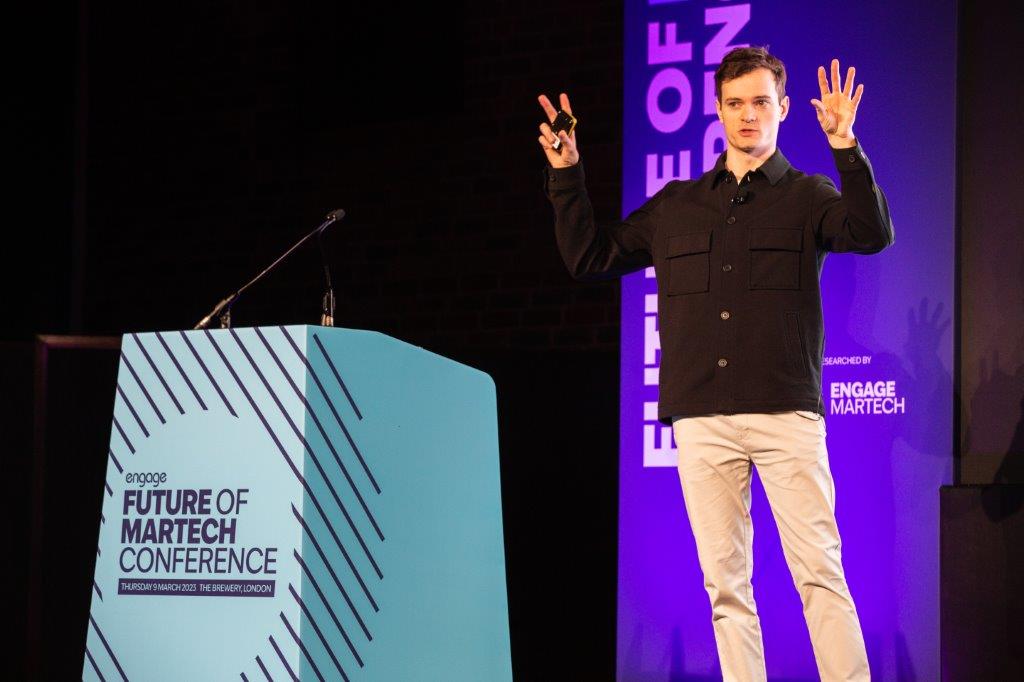Simon Daniels: “Ditch the MQL!”

An interview with Simon Daniels, Principal Analyst at Forrester
Following our Future of Marketing Conference on the 7th of March, we reached out to one of our most highly rated speakers: Simon Daniels, Principal Analyst at Forrester. In an interview, he shared why marketers should ditch marketing qualified leads (MQLs) and what he views as the key trends shaping the future of the industry.
PLEASE INTRODUCE YOURSELF AND YOUR ROLE.
I’m Simon Daniels, a Principal Analyst in the European B2B Research team at Forrester Research, based in London and covering revenue operations. I work with marketing and revenue operations clients in Europe and worldwide, supporting US and Singapore based colleagues. Our revenue operations service spans a number of priorities, as we refer to them, including planning and budgeting, process, insights and measurement, data, and technology. While I tend to speak to clients across these topics, bringing in specialists when a client needs to deep dive in a particular area, I’m also developing specialisms in budgeting, productivity and process.
As analysts, our role comprises creating the core research for which Forrester is known, speaking to clients to address specific queries they have and working with them on longer term initiatives as they adopt our models and best practices, for instance. I also speak at a variety of events, such as our own B2B Summit, as well as for clients and at external events, such as the Future of Marketing Conference, of course. It’s an incredibly varied role with no two days alike, and all of those activities can happen in a single day!
WHAT WERE THE MAIN REASONS FOR SHARING YOUR STORY AT OUR CONFERENCE?
At Forrester we’re famous for our “waterfall” models, which have been guiding B2B marketers on how to think about and manage their demand processes for nearly two decades. Having evolved it to an opportunity-based and buying-group centric model in the last few years, we take every opportunity to exhort marketers to move away from an individual lead approach and meet buyers where they are in the real world. That means recognising that decisions for high-consideration purchases in B2B situations are not made by individuals but rather by groups working together.
As such, marketers need to change the way we work, recognising all of the many buying signals that exist in today’s digital landscape and combining them in a coherent way to deliver the best possible customer experience. Speaking at an event like the Future of Marketing Conference enables me to share this message with the marketers who are making these decisions.
WHAT ARE THE BIGGEST TAKEAWAYS THAT OUR COMMUNITY CAN LEARN FROM YOUR STORY?
Ditch the MQL! With a success rate that can fall below 1% in terms of conversion to closed won business, individual, stand-alone leads simply don’t make sense anymore. Every leading CRM system makes it possible to attach multiple individuals to an opportunity, and this is a much better way to manage and track demand generation. We think of these opportunities as “containers”, representing potential deals and holding all the information about them, from the people involved, through the solution being sold to the buying signals that have been collected. Building on that, as well as thinking about these containers as being new business, they can also represent renewal and growth opportunities, making it easier to differentiate between these various motions.
ARE THERE ANY PROJECTS THAT YOU’RE CURRENTLY WORKING ON THAT YOU’RE EXCITED ABOUT?
I’m involved in a range of initiatives right now. Building on this topic of opportunities and buying groups, we are developing a holistic approach to managing businesses’ entire growth engine. We have also created a framework for orchestrating revenue operations that myself and a colleague launched last year, and right now I’m working on the leadership element of that model. I’m also developing guidance for marketing leaders in international businesses on how best to manage marketing budgets and spend across regions. This frequently represents a big headache in terms of knowing how to best allocate funding, ensure it is being spent efficiently and dealing with all the nuances that arise across multiple geographies.
LOOKING TO THE FUTURE, WHAT WOULD YOU SAY ARE THE KEY TRENDS SHAPING THE INDUSTRY?
We certainly expect that much greater cohesion across the growth engine (typically comprising marketing, sales, customer success and product functions) will become ever more crucial to delivering customer value and commercial impact. Siloed thinking around new business acquisition, growth, retention, and customer value delivery are costing businesses billions in lost and forgone revenue and driving considerable buyer dissatisfaction. Businesses that eradicate these silos will unlock this lost value.
Beyond that, AI continues to be the buzz topic of course, touching all aspects of marketing and sales, including demand management. Understanding buying signals, identifying buying groups and creating personalised customer engagement are all areas where AI will play a crucial role in the future – starting now!


